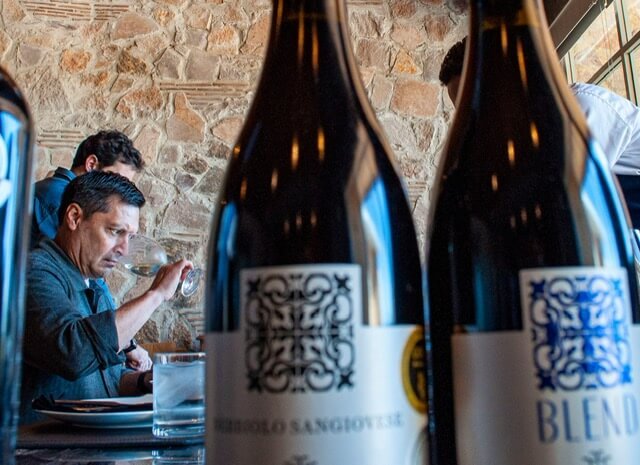How the Mexican Wine Industry Is Gaining Traction
Mexico’s wine industry is growing and changing at a rapid clip. Centered mostly in two main growing and producing regions, Valle de Guadalupe in Baja California Norte, and Central Mexico’s El Bajío (comprised of Guanajuato, Hidalgo, Querétaro, San Luis Potosí, and Zacatecas) and Coahuila, wine has been made from the native, indigenous grape stock in Mexico dating back to the 1530’s, first by missionaries and later by entrepreneurs supplying the local and ex-pat populations of Mexico City and Ensenada. But despite a complicated history, Mexican winemakers are now on a roll.
History of Wine in Mexico
The industry is perhaps still recovering from King Carlos II of Spain’s 1699 ban on new wineries, designed to protect the Spanish wine industry, mostly from competition with the excellent wines that were starting to be made in Coahuila’s oasis-like Parras Valley. The ban, which lasted until 1810, set back production for over a century. Fast forwarding to the 1990’s, producers like Monte Xanic, Santo Tomás, and L.A. Cetto succeeded in bringing modern winemaking from Mexico to domestic and international attention.
The two main wine regions in Mexico
Valle de Guadalupe photo credit Josue Michel on Unsplash
Valle de Guadalupe’s coastal microclimates–warm days, cool nights, beachy sandy soil, red clay in the south–offer excellent conditions for grape growing. In the region of El Bajío, elevation is the key to growing grapes suitable for winemaking. Vineyards sit at up to 6000 feet, with clay and loam soils, plus that same diurnal shift– daytime high temperatures that cool off to nighttime lows–although the high desert’s lack of water can be a concern, that dry climate creates naturally pest- and disease- free vines–and intense, concentrated grape juice.
In recent years, young winemakers are migrating to Mexico’s unique winemaking regions from more traditionally wine-centric countries like Spain and Argentina or are traveling to get educated in the vineyards of Bordeaux or the wineries of Napa Valley and bringing knowledge and experience back to their Mexican homeland.
“There are no rules in Mexico” is a regular refrain often heard in reference to the industry. Karen MacNeil, in The Wine Bible, describes Mexican vintners’ choice of grape varieties as a “seemingly incongruous whirlwind of diversity,” a statement which reflects both the freedom enjoyed by the producers, and perhaps the confusion faced by consumers. Additionally, many of the wines produced are considered low-intervention, a term that has become very popular for folks interested in niche natural, organic, and biodynamic wines.
Mexican Terroir
Take, for example, Hans Duer, owner of Vinaltura in the Central Mexican state of Querétaro, the region where most of the Mexican sparkling wines originate. “We founded Vinaltura eight years ago with just a single purpose in mind. We wanted to represent el Bajío in Mexico and its diversity throughout its wines.” They experimented by planting tiny plots of land with different grape varieties–chenin blanc, sauvignon blanc, tempranillo, malbec and merlot, plus some German-style rootstock like gewurztraminer and riesling as a nod to Hans’ family heritage. They harvest small amounts of each variety to ferment in their small, 1000 liter tanks, then taste and blend and taste some more. “Our consulting winemaker, Hugo Acosta, is well known because of his philosophy that the wine is made in the vineyard, not the winery…so our wines are made up of terroir not technique.”
Tom Bracamontes photo credit Lisa Futterman
This style of winemaking fits in with a younger, more progressive wine drinking demographic–and the progressive faction of the Mexican wine industry wagers that the new wave of wine lovers will be into these fresher, less traditional bottles. Tom Bracamontes owns La Competencia, an importer of a leading Mexican wine portfolio. The former hip hop promoter, who’s based 6 months in Napa and 6 months in Ensenada, says “in Mexico, we have winemakers in their vineyards, taking chances, seeing what happens. People say the only thing worse than being the first to take a chance is being the last. I think Mexican wine is going to be the next hit record. Our customer is younger, and they are Latinos with buying power, and Latino cultural pride. They don’t want over-extracted wines that have to age, they want wines that are drinkable now.”
The Future for Mexican Wines in the US
In the US, Bracamontes says, “We are starting to see the last piece of the puzzle, large retailers starting to evolve in their thinking…If we have a section for wines from South Africa, Eastern Europe…why wouldn’t we have a section of Mexican wine?”
Liz Barrett, wine writer at What’s in That Bottle, agrees. “The quality of Mexican wines is going up, up, up. As people seek out wines from new regions, Mexico is at the forefront…as more people discover Mexican wines - whether during travel to Mexico or at …restaurants that are making a point to serve them…more distributors in the U.S. will be open to bringing these wines in.”
Along with the growth of viticulture and wine production comes a huge push in the hospitality industry. Wineries are building tasting rooms and even small hotels on site as agritourism draws guests to the regions. In central Mexico, the wineries draw on visitors to San Miguel de Allende and have established Rutas de Vinos to help tourists find their way–in Guanajuato the wine trail includes fifteen different estates. The Valle de Parras, (“valley of vines”), home of Casa Madero, the oldest winery in Mexico, even has a Ruta de Vinos y Dinos, combining the wine route with fossil sites for a paleontology break in between vineyards. More than ever in both Valle de Guadalupe and Central Mexico, consumers can get to know these less traditional producers and their methods, get educated on the climates, terroir, and grape varieties, and taste (and take home) the results of their groundbreaking efforts.






